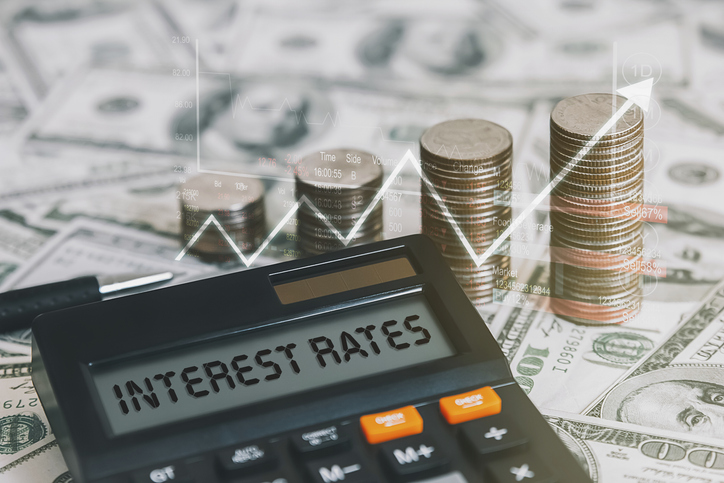Fed Walks Tightrope as Gold, Crypto, and Stocks Retreat
Daily News Nuggets | Today’s top stories for gold and silver investors
November 17th, 2025
Fed’s Jefferson Walks a Tightrope on Jobs and Rates
Federal Reserve Vice Chair Philip Jefferson acknowledged Monday that risks to the labor market have increased — but he’s not rushing to cut rates. Speaking in Kansas City, Jefferson said downside risks to employment now outweigh upside inflation risks, yet stressed the Fed should move “slowly” as it approaches a neutral policy stance.
The unemployment rate sits at 4.3%, and Jefferson sees the labor market gradually cooling. The problem? The ongoing government shutdown has left the Fed flying blind, with little clarity on what data officials will have before their December 9-10 meeting. Markets have recalibrated sharply—the odds of a December rate cut have plummeted to just 42%, down from 94% a month ago.
For gold investors, this matters. A cautious Fed creates uncertainty—lower rates typically boost bullion, but if cuts come slower than expected, that support may be delayed. If unemployment does deteriorate and forces the Fed’s hand, however, gold could rally sharply as a hedge against economic weakness. That rate-cut uncertainty is already showing up in prices.
Gold Takes a Breather as Rate Cut Hopes Dim
Gold slipped again Monday, extending losses to a third straight session as expectations for a December Fed rate cut continue to evaporate. Bullion dropped as much as 0.8% after falling over 2% on Friday, hovering around $4,160 per ounce — weighed down by a strengthening dollar and growing skepticism that the Fed will ease rates anytime soon.
Federal Reserve officials have shown little urgency to cut borrowing costs, and without that catalyst, gold—which doesn’t pay interest—loses some of its appeal. Lower rates typically boost gold by making it more attractive relative to yield-bearing assets like bonds. Traders are now in wait-and-see mode as economic data trickles out. Despite the pullback, gold is still up over 53% year-to-date, a reminder that the bigger trend remains intact.
The caution isn’t limited to gold — even equity markets are seeing a shift in sentiment.
Retail Investors Are Finally Skipping the Dip
The “buy the dip” mentality that powered much of 2025’s bull market is showing cracks. Retail investors — who’ve been the market’s most reliable dip-buyers all year — are pulling back, according to new data from Vanda Research and Bank of America. Individual investors turned net sellers for the first time since late September, while institutional buyers dominated recent ETF inflows.
Valuation concerns are creeping in, and questions about whether we’re in an AI bubble are getting louder. Even Charles Schwab’s sentiment tracker, while still positive, shows retail traders are more cautious. This matters because retail makes up about a quarter of stock trading volume. If they stop catching falling knives, selloffs could last longer and cut deeper. And when risk appetite fades, investors historically rotate into safer assets — exactly the kind of environment where gold and silver shine.
Behind the market uncertainty? Signs the labor market is continuing to weaken.
Layoffs Continue, But Tariffs Aren’t the Main Story Anymore
Corporate America just posted its highest non-recession October for layoffs in 22 years, with 153,000 job cuts announced last month, according to Challenger, Gray & Christmas. But here’s the twist: tariffs are no longer the primary culprit. BCA Research notes that most large firms have successfully navigated tariff pressures, preserving profitability even as costs rose.
Instead, the layoffs reflect something else—companies trimming headcount to fund investments in generative AI infrastructure. Tech sector earnings grew 27% in Q3, yet firms are still cutting jobs to redirect resources toward automation. Meanwhile, industries like warehousing (skewed by UPS restructuring) are also shedding workers.
The takeaway? The labor market is softening, but not because of trade wars. If this trend accelerates, it could weigh on consumer spending — historically the moment investors turn to safe-haven assets like gold and silver as recession insurance.
Crypto’s Small-Cap Carnage Reaches Pandemic Levels
The crypto selloff is getting ugly—especially for the market’s riskiest corners. The MarketVector Digital Assets 100 Small-Cap Index, which tracks the 50 smallest digital tokens, plunged to its lowest level since November 2020 over the weekend. That’s pandemic-era territory, and a stark reminder that when crypto bleeds, the small stuff hemorrhages.
Bitcoin has held up relatively better, but even it dipped below $96,000 last week, losing over 5% in seven days. The Fear & Greed Index hit 10 — “extreme fear” levels — the lowest reading since late February. The rout stems from a cocktail of profit-taking after Bitcoin’s failed $100,000 breakout, institutional outflows, macro uncertainty around Fed policy, and thin liquidity that’s amplifying every swing.
For precious metals investors watching from the sidelines, it’s a textbook example of what happens when speculative fervor meets tighter monetary conditions. Gold doesn’t tweet, but it also doesn’t crash 50% in a month.




Post Comment